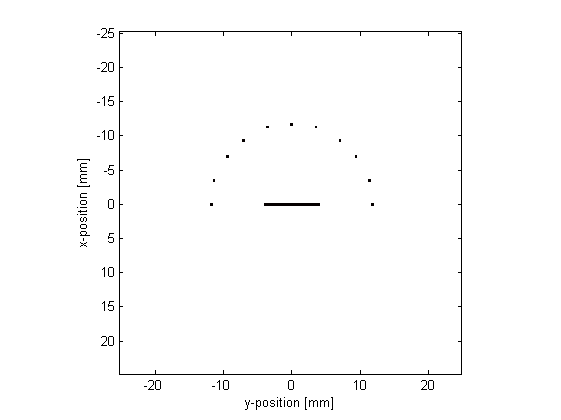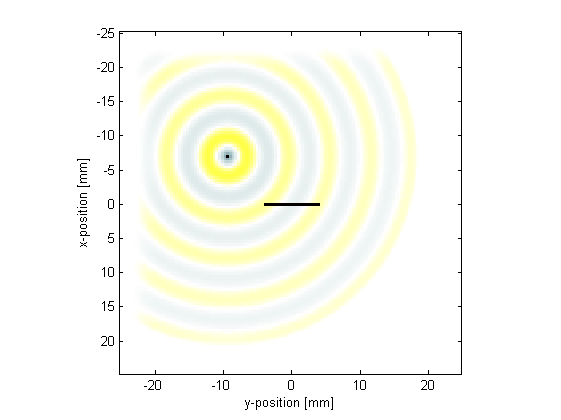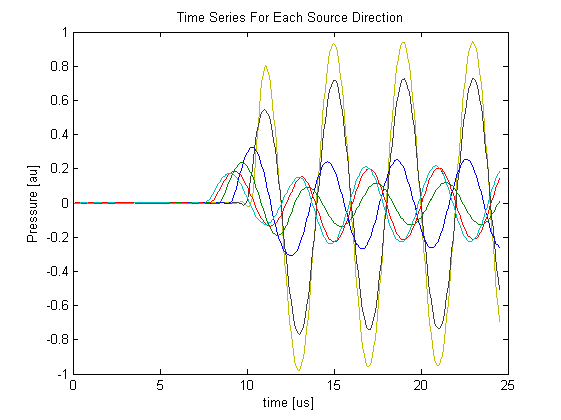

| k-Wave Toolbox |
 
|
| On this page… |
|---|
|
Defining a large element detector |
This example demonstrates how the sensitivity of a large single element detector varies with the angular position of a point-like source. It builds on Monopole Point Source In A Homogeneous Propagation Medium and Focussed Detector in 2D examples.
The sensor is defined as a binary sensor mask in the shape of a line.
% define a large area detector sensor.mask = zeros(Nx, Ny); sensor.mask(Nx/2+1, (Ny/2-9):(Ny/2+11)) = 1;
Equi-spaced point sources are then defined at a fixed distance from the centre of the detector face. To do this, the Cartesian coordinates of the source points are calculated using makeCartCircle. A binary source mask corresponding to these Cartesian points is then calculated using cart2grid. The indices of the matrix elements for which the binary mask is equal to 1 (the source points) are found using find.
% define equally spaced point sources lying on a circle centred at the % centre of the detector face circle = makeCartCircle(30*dx, 11, [0, 0], pi); % find the binary sensor mask most closely corresponding to the cartesian % points coordinates from makeCartCircle circle = cart2grid(kgrid,circle); % find the indices of the sources in the binary source mask source_positions = find(circle == 1);

A time varying pressure source is defined to drive the point sources.
% define a time varying sinusoidal source source_freq = 0.25e6; source_mag = 1; source.p = source_mag*sin(2*pi*source_freq*kgrid.t_array); % filter the source to remove high frequencies not supported by the grid source.p = filterTimeSeries(kgrid, medium, source.p);
For each point source, a new binary source mask is defined, and the simulation is run. When each simulation has finished, the returned sensor data is summed together to mimic a single large detector.
for source_loop = 1:length(source_positions)
% select a point source
source.p_mask = zeros(Nx, Ny);
source.p_mask(source_positions(source_loop)) = 1;
% create a display mask to display the transducer
display_mask = source.p_mask + sensor.mask;
% run the simulation
input_args = {'DisplayMask', display_mask, 'PlotScale', [-0.5 0.5]};
sensor_data = kspaceFirstOrder2D(kgrid, medium, source, sensor, input_args{:});
% average the data recorded for each grid point to simulate the
% measured signal from a large aperture, single element, detector
single_element_data(:, source_loop) = sum(sensor_data, 1);
end

The recorded time series corresponding to the different source positions are plotted below. The maximum of each time series are also plotted as a function of angle, where the angle is defined between the detector plane and a line joining the point source and the centre of the detector face. The directionality introduced by the large size of the detector is clearly seen.


 |
Focussed Detector in 3D | Modelling Sensor Directivity in 3D |  |
© 2009-2014 Bradley Treeby and Ben Cox.